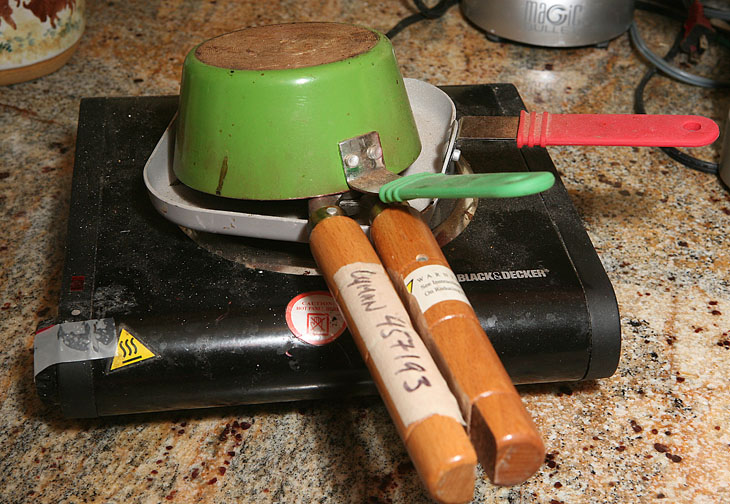.If you are bottom pouring, that may be so.
If you are ladle-dipping, it is extremely important -- both for keeping crud out of the pour,
and for keeping the dipper spout clean for sprue plate contact
Even when ladle-pouring, I don't think there is much benefit. You will be scraping and scraping and scraping. All you are doing is losing lead.
What you need is a ladle with a submerged pour spout. This keeps the dross on top of the melt in the ladle, while allowing the pure molten lead to run out the spout uncontaminated.
Such a ladle looks like this:
What you
don't want is one of the ladles that looks like this:
These ladles simply pour dross first.
When I ladle pour with my Lyman ladle, I just plunge through the dross. The ladle bowl fills up with melt, with the dross staying on top.
His opinion was that the flux was for the mixing of alloys, such as tin and antimony into the lead. Lead oxides and crud form on the top and need to be skimmed off, sort of like slag. He also said there is no direct advantage to fluxing a pot of pure lead, but is useful in mixes.
I don't know if there is even any benefit to fluxing alloys. Some people claim yes, some no:
http://castboolits.gunloads.com/archive/index.php/t-101687.html
When I cast alloy, it is unknown wheel weight lead for plinking ammo, and since I have no idea what the composition was to start with, I don't worry about what it is at the end, either.

Evidently linotype used by printers would, over time, lose hardness due to oxidation and would have to be refreshed by adding additional tin or antimony.
The little LEE dipper I have is 1, a bit small, and 2, not able to really get under the crap too well. It is handy at skimming the top "rusty" looking stuff off and into an aluminum pie place lined with heavy aluminum foil.
I would ditch the Lee dipper for an RCBS or Lyman dipper with a submerged spout.
Steve




